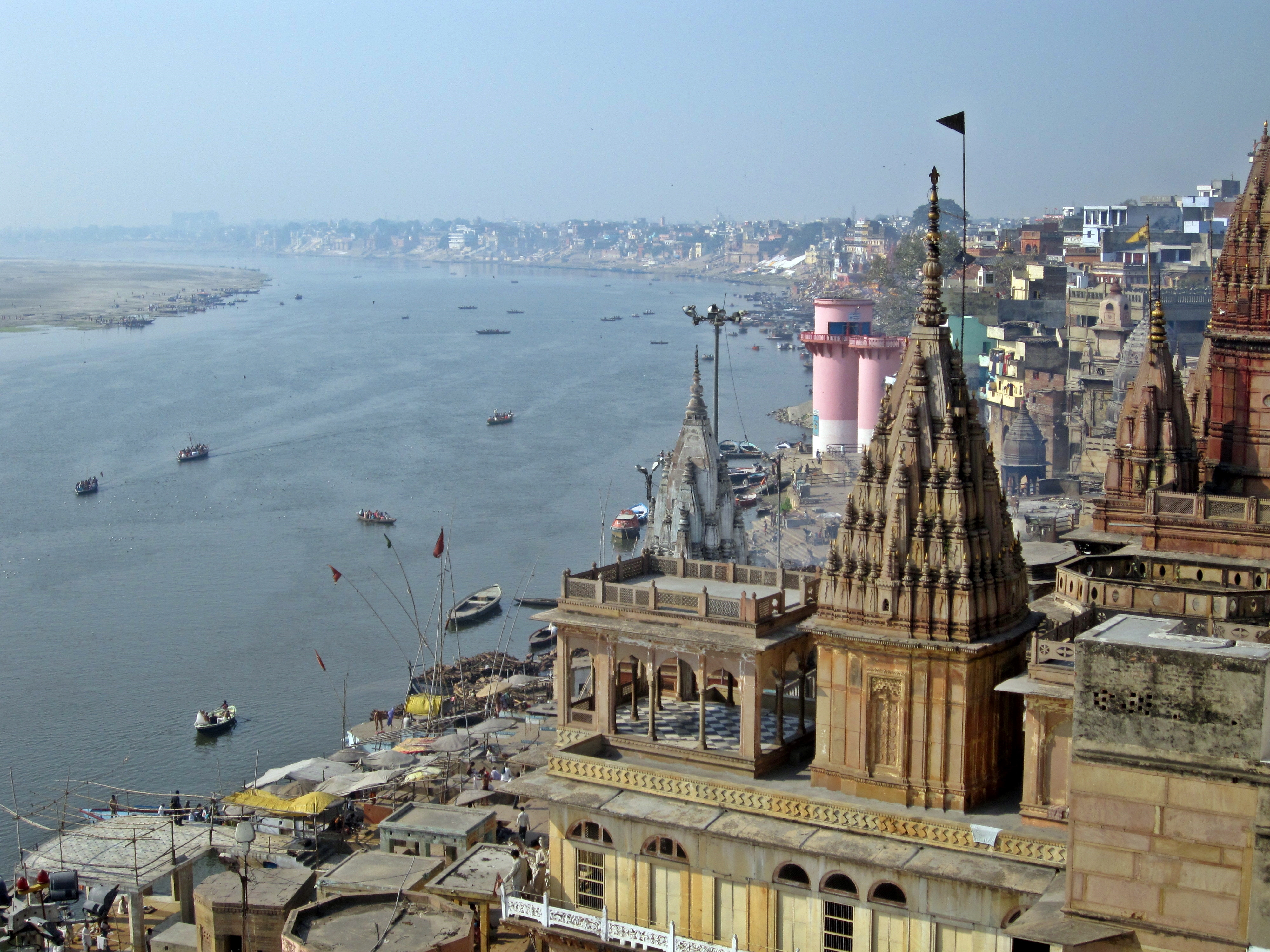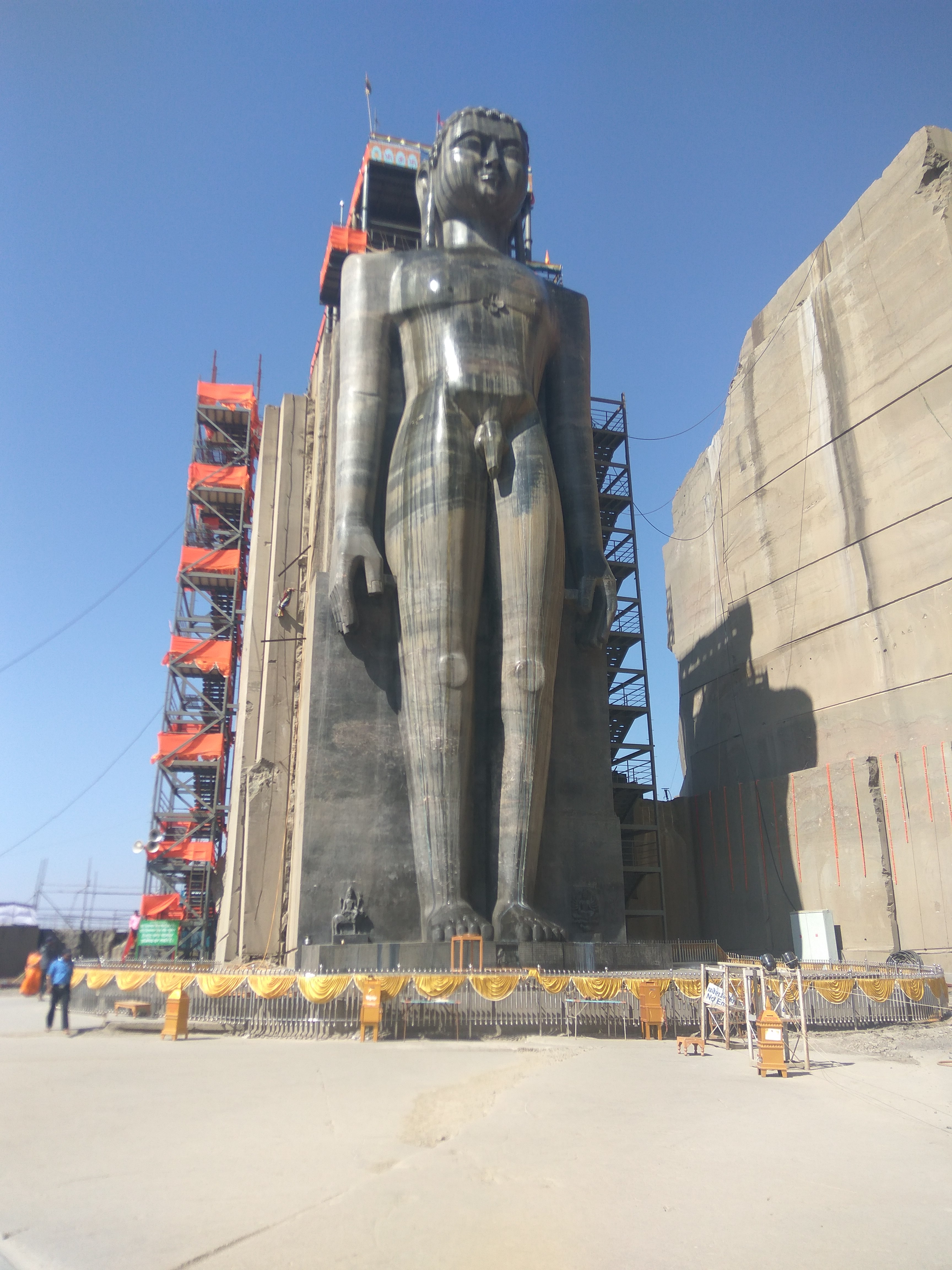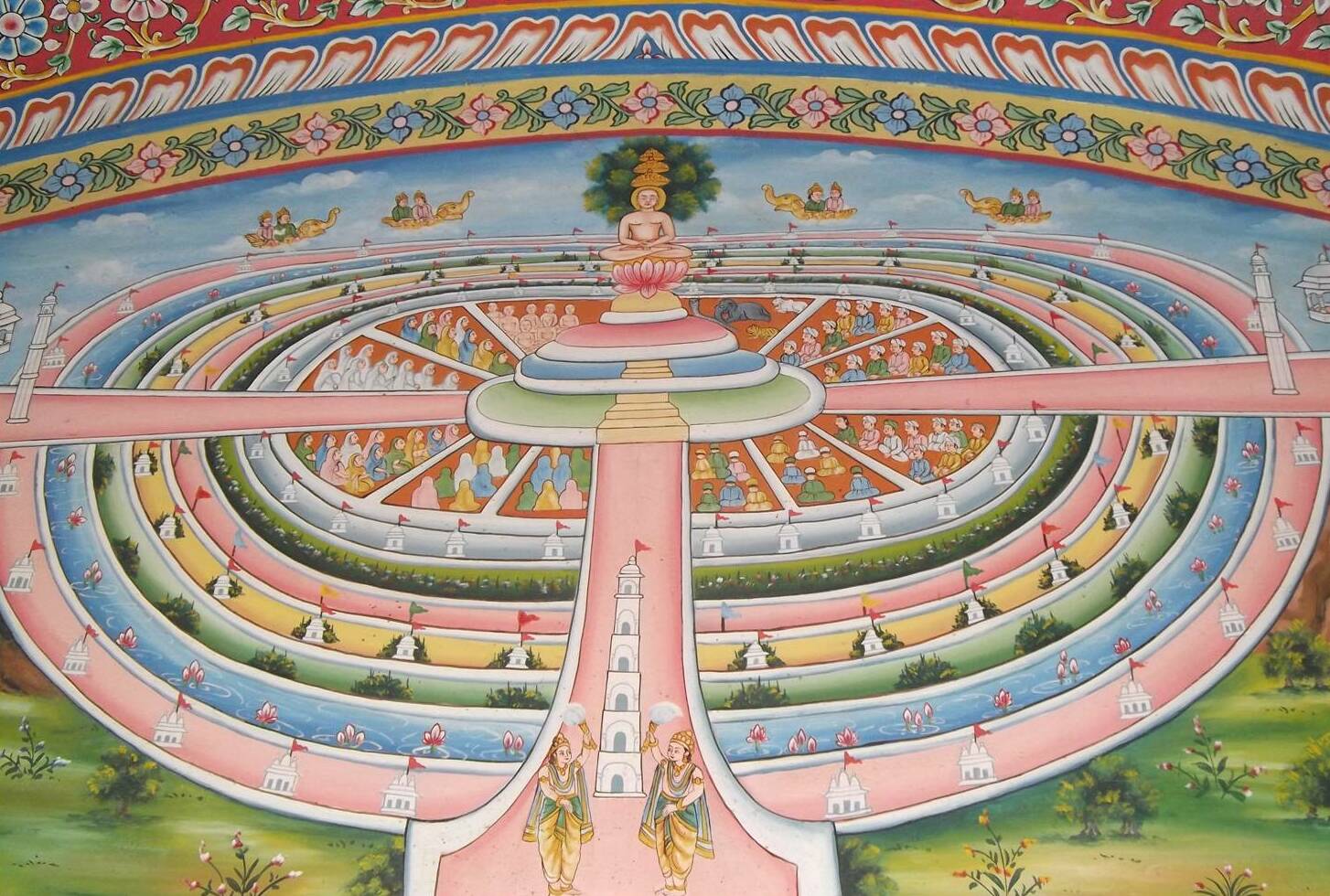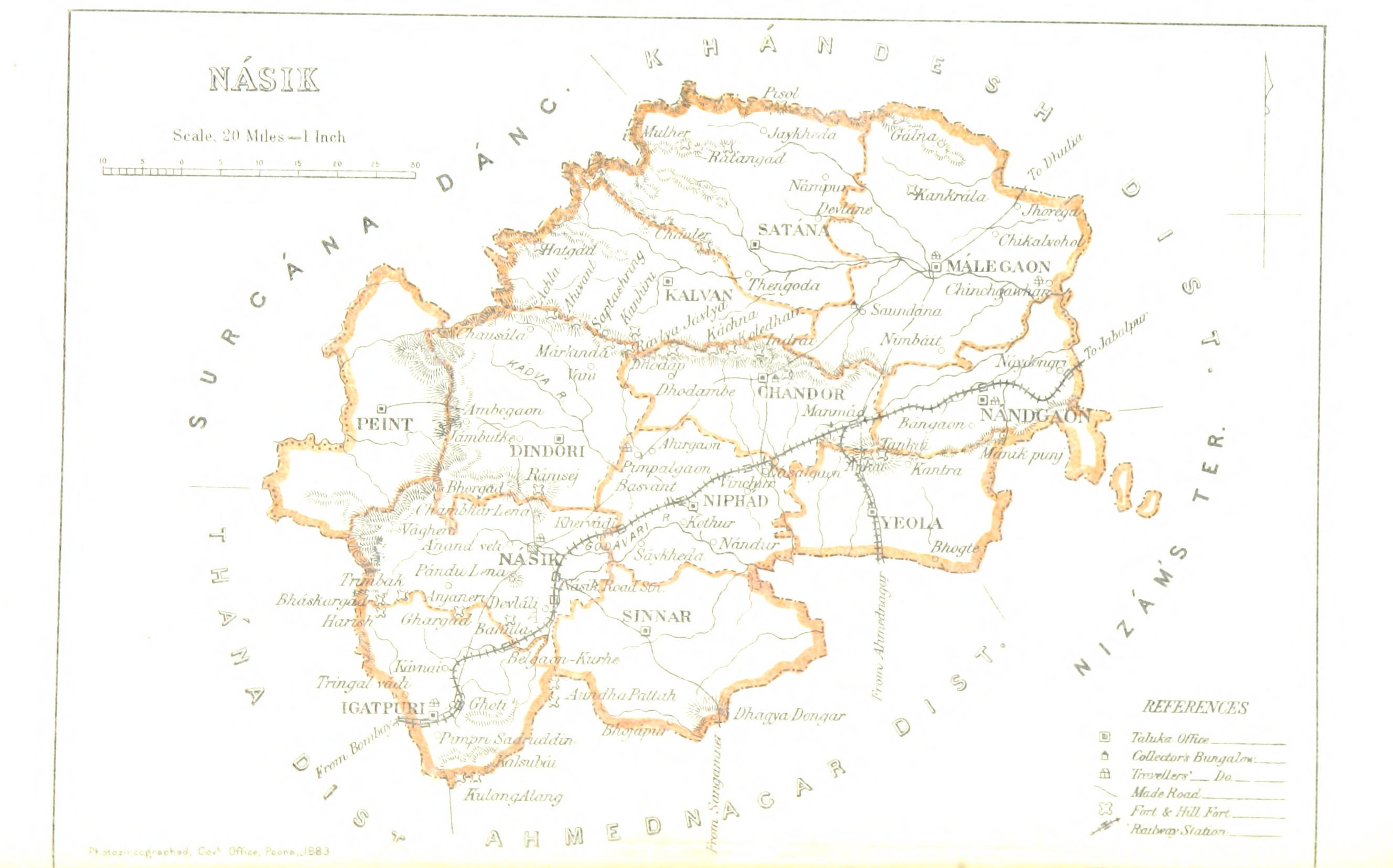|
Gajpanth
Gajpanth (also spelled ''Gajpantha'') is a Digambar Jain pilgrimage site (''Siddha-kshetra'') located in Mhasrul village, in the Nashik district of the Indian state of Maharashtra. It's managed and maintained by Registered Trust No. A-193/NSK. Geography The pilgrimage is located in the Indian state of Maharashtra. It is from the Nashik Road Railway station and from Nashik City, and is situated on the steep slopes of a hill. The pilgrimage site is accessible via a staircase built in black stone, which leads directly to the temple. The hill has 450 steps, three caves (known as ''chamar leni''), and several temples belonging to the Digambara sect of the Jains. There is also a sculpture depicting samavasarana (divine preaching hall of tirthankara) on the hills of Gajpanth. History Gajpanth is said to be the salvation place of seven ''Balabhadra'' (heroes) of the Jain Universal history, known as Vijay, Achal, Sudharma, Suprabh, Nandi, Nandimitra and Sudarshan. It is believed that ... [...More Info...] [...Related Items...] OR: [Wikipedia] [Google] [Baidu] |
Parshvanatha
''Parshvanatha'' (), also known as ''Parshva'' () and ''Parasnath'', was the 23rd of 24 ''Tirthankaras'' (supreme preacher of dharma) of Jainism. He is the only Tirthankara who gained the title of ''Kalīkālkalpataru (Kalpavriksha in this "Kali Yuga").'' Parshvanatha is one of the earliest ''Tirthankaras'' who are acknowledged as historical figures. He was the earliest exponent of Karma philosophy in recorded history. The Jain sources place him between the 9th and 8th centuries BCE whereas historians consider that he lived in the 8th or 7th century BCE. Parshvanatha was born 273 years before Mahavira. He was the spiritual successor of 22nd tirthankara Neminatha. He is popularly seen as a propagator and reviver of Jainism. Parshvanatha attained moksha on Mount Sammeda ( Madhuban, Jharkhand) popular as Parasnath hill in the Ganges basin, an important Jain pilgrimage site. His iconography is notable for the serpent hood over his head, and his worship often includes Dharanendr ... [...More Info...] [...Related Items...] OR: [Wikipedia] [Google] [Baidu] |
Jainism
Jainism ( ), also known as Jain Dharma, is an Indian religions, Indian religion. Jainism traces its spiritual ideas and history through the succession of twenty-four tirthankaras (supreme preachers of ''Dharma''), with the first in the current time cycle being Rishabhadeva, whom the tradition holds to have lived millions of years ago, the twenty-third ''tirthankara'' Parshvanatha, whom historians date to the 9th century BCE, and the twenty-fourth ''tirthankara'' Mahāvīra, Mahavira, around 600 BCE. Jainism is considered to be an eternal ''dharma'' with the ''tirthankaras'' guiding every time cycle of the Jain cosmology, cosmology. The three main pillars of Jainism are ''Ahimsa in Jainism, ahiṃsā'' (non-violence), ''anekāntavāda'' (non-absolutism), and ''aparigraha'' (asceticism). Jain monks, after positioning themselves in the sublime state of soul consciousness, take five main vows: ''ahiṃsā'' (non-violence), ''satya'' (truth), ''Achourya, asteya'' (not stealing), ''b ... [...More Info...] [...Related Items...] OR: [Wikipedia] [Google] [Baidu] |
Balabhadra
In Jainism, Balabhadra or Baladeva are among the sixty-three illustrious beings called ''śalākāpuruṣas'' that are said to grace every half cycle of time. According to Jain cosmology, ''śalākāpuruṣa'' are born on this earth in every ''Dukhama-sukhamā'' ''ara''. They comprise twenty-four '' tīrthaṅkaras'', twelve ''chakravartins'', nine ''balabhadra'', nine ''narayana'', and nine ''pratinarayana''. Their life stories are said to be most inspiring. According to the Jain ''puranas'', the ''Balabhadras'' lead an ideal Jain life. Nine Balabhadras According to the ''Digambaras'' nine ''Balabhadras'' of the present half cycle of time ('' avasarpini'') are: * Vijaya * Acala * Bhadra * Suprabha * Sudarśana * Nandisena * Nandimitra * Rāma * Balarama Balarama (Sanskrit: बलराम, IAST: ''Balarāma'') is a Hindu god and the elder brother of Krishna. He is particularly significant in the Jagannath tradition, as one of the triad deities. He is also known as Hal ... [...More Info...] [...Related Items...] OR: [Wikipedia] [Google] [Baidu] |
Jain Pilgrimage Sites
Jainism ( ), also known as Jain Dharma, is an Indian religion. Jainism traces its spiritual ideas and history through the succession of twenty-four tirthankaras (supreme preachers of ''Dharma''), with the first in the current time cycle being Rishabhadeva, whom the tradition holds to have lived millions of years ago, the twenty-third ''tirthankara'' Parshvanatha, whom historians date to the 9th century BCE, and the twenty-fourth ''tirthankara'' Mahavira, around 600 BCE. Jainism is considered to be an eternal ''dharma'' with the ''tirthankaras'' guiding every time cycle of the cosmology. The three main pillars of Jainism are ''ahiṃsā'' (non-violence), ''anekāntavāda'' (non-absolutism), and ''aparigraha'' (asceticism). Jain monks, after positioning themselves in the sublime state of soul consciousness, take five main vows: ''ahiṃsā'' (non-violence), ''satya'' (truth), ''asteya'' (not stealing), ''brahmacharya'' (chastity), and ''aparigraha'' (non-possessiveness). These pr ... [...More Info...] [...Related Items...] OR: [Wikipedia] [Google] [Baidu] |
Mangi-Tungi
Mangi-Tungi is a prominent twin-pinnacled peak with plateau in between, located near Tahrabad about 125 km from Nashik, Maharashtra, India. Mangi, high above sea level, is the western pinnacle and Tungi, high, the eastern. Mangi-Tungi is from the city of Satana. Overview There are numerous temples and is considered sacred in Jainism. It enshrines images of Tirthankaras in several postures including '' Padmasana'' and ''kayotsarga''. Sometimes, it is described as ''Siddha Kshetra'', meaning a gateway to the state of enlightenment. Around 3,500 (7,000 Up & Down) steps lead to the foot of the peak, which is enriched with several monuments of historical and religious prominence. Besides, there are numerous caves named after great Tirthankaras such as Mahavira, Rishabhanatha, Shantinatha and Parshvanatha. A grand fair is held here annually during ''Kartik'' (September–October) where people visit in large numbers to witness festival. There are many inscriptions on ido ... [...More Info...] [...Related Items...] OR: [Wikipedia] [Google] [Baidu] |
Moksha (Jainism)
Sanskrit ' or Prakrit ''mokkha'' refers to the liberation or salvation of a soul from ''saṃsāra'', the cycle of birth and death. It is a blissful state of existence of a soul, attained after the destruction of all karmic bonds. A liberated soul is said to have attained its true and pristine nature of infinite bliss, infinite knowledge and infinite perception. Such a soul is called ''siddha'' and is revered in Jainism. In Jainism, ''moksha'' is the highest and the noblest objective that a soul should strive to achieve. In fact, it is the only objective that a person should have; other objectives are contrary to the true nature of soul. With the right view, knowledge and efforts all souls can attain this state. That is why Jainism is also known as ' or the "path to liberation". According to the Sacred Jain Text, Tattvartha sutra: Bhavyata From the point of view of potentiality of , Jain texts bifurcates the souls in two categories–''bhavya'' and ''abhavya''. ''Bhavya'' ... [...More Info...] [...Related Items...] OR: [Wikipedia] [Google] [Baidu] |
Jain Monks
Jain monasticism refers to the order of monks and nuns in the Jain community and can be divided into two major denominations: the ''Digambara'' and the ''Śvētāmbara''. The monastic practices of the two major sects vary greatly, but the major principles of both are identical. Five ''mahāvratas'' (Great Vows), from Mahavira's teachings, are followed by all Jain ascetics. Historians believe that a united Jain ''sangha'' (community) existed before 367 BCE, about 160 years after the ''moksha'' (liberation) of Mahavira. The community then gradually divided into the major denominations. Terminology ''Digambaras'' use the word ' for male monastics and ''aryika'' for female monastics. ''Digambara monks'' are also called ''nirgrantha'' (without bonds). ''Śvētāmbaras'' use the word ''sadhvi''s for female monastics. History Mahavira had 11 chief disciples, Indrabhuti Gautama being the most senior. Each chief disciple was made responsible for 250 to 500 monks. The Jain sangha ( ... [...More Info...] [...Related Items...] OR: [Wikipedia] [Google] [Baidu] |
Crore
A crore (; abbreviated cr) denotes ten million (10,000,000 or 107 in scientific notation) and is equal to 100 lakh in the Indian numbering system. It is written as 1,00,00,000 with the local 2,2,3 style of digit group separators (one lakh is equal to one hundred thousand, and is written as 1,00,000). It is widely used both in official and other contexts in Afghanistan, Bangladesh, Bhutan, India, Myanmar, Nepal, Pakistan, and Sri Lanka. It is often used in Bangladeshi, Indian, Pakistani, and Sri Lankan English. Money Large amounts of money in Bangladesh, India, Nepal, and Pakistan are often written in terms of ''Koti'' or ''crore''. For example (one hundred and fifty million) is written as "fifteen ''crore'' rupees", "15 crore" or "". In the abbreviated form, usage such as "15 cr" (for "15 ''crore'' rupees") is common. Trillions (in the short scale) of money are often written or spoken of in terms of ''lakh crore''. For example, ''one trillion rupees'' is equivalent to: * ... [...More Info...] [...Related Items...] OR: [Wikipedia] [Google] [Baidu] |
Samavasarana
In Jainism, Samavasarana or Samosharana ("Refuge to All") is the divine preaching hall of the Tirthankara, stated to have more than 20,000 stairs in it. The word ''samavasarana'' is derived from two words, ''sama'', meaning general and ''avasara'', meaning opportunity. It is an important feature in Jain art. The Samavasarana seems to have replaced the original Jain stupa as an object of worship. Samavasarana Hall In samavasarana hall, the ''tirthankara'' sits on a throne without touching it (about two inches above it). Around the tirthankara sit the ''ganadharas'' (chief disciples). Living beings sit in the following order: *In the first hall, ascetics *In the second hall, one class of deva ladies *In the third hall, ''aryikas'' (nuns) and laywomen *In the next three halls, three other classes of deva ladies *In the next four halls, the four classes of devas (heavenly beings) *Men, in the eleventh hall *Animals, in the last hall According to Jain texts, there would be four w ... [...More Info...] [...Related Items...] OR: [Wikipedia] [Google] [Baidu] |
Tirthankara
In Jainism, a ''Tirthankara'' (Sanskrit: '; English: literally a 'ford-maker') is a saviour and spiritual teacher of the ''dharma'' (righteous path). The word ''tirthankara'' signifies the founder of a '' tirtha'', which is a fordable passage across the sea of interminable births and deaths, the '' saṃsāra''. According to Jains, a ''Tirthankara'' is an individual who has conquered the ''saṃsāra'', the cycle of death and rebirth, on their own, and made a path for others to follow. After understanding the true nature of the self or soul, the ''Tīrthaṅkara'' attains '' Kevala Jnana'' (omniscience). Tirthankara provides a bridge for others to follow the new teacher from ''saṃsāra'' to ''moksha'' (liberation). In Jain cosmology, the wheel of time is divided in two halves, Utsarpiṇī' or ascending time cycle and ''avasarpiṇī'', the descending time cycle (said to be current now). In each half of the cosmic time cycle, exactly twenty-four ''tirthankaras'' grace thi ... [...More Info...] [...Related Items...] OR: [Wikipedia] [Google] [Baidu] |
Nashik District
Nashik district, also known as Nasik district, is a district in Maharashtra, India. The city of Nashik is the administrative headquarters of the district. Nashik is well known for the production of wine. Nashik is also known as Mini Maharashtra, because the climate and soil conditions of Surgana, Peth, Igatpuri resembles with Konkan. Niphad, Sinnar, Dindori, Baglan blocks are like Western Maharashtra and Yeola, Nandgaon, Chandwad blocks are like Vidarbha Region. Nashik is the biggest city in the district while Malegaon is the second biggest city. Manmad, Igatpuri, sinnar are some of the big cities situated in the Nashik District. Manmad is one of the biggest railway junction in india while the city of Malegaon is famous for its powerloom. Nashik district is the third largest district in Maharashtra state in terms of population of 8,107,187 and occupying an area of 15,582 square kilometres in the north Maharashtra region. It is bounded by Dhule District to the north, Jalgaon D ... [...More Info...] [...Related Items...] OR: [Wikipedia] [Google] [Baidu] |
Digambara
''Digambara'' (; "sky-clad") is one of the two major schools of Jainism, the other being ''Śvētāmbara'' (white-clad). The Sanskrit word ''Digambara'' means "sky-clad", referring to their traditional monastic practice of neither possessing nor wearing any clothes. Digambara and Śvētāmbara traditions have had historical differences ranging from their dress code, their temples and iconography, attitude towards female monastics, their legends, and the texts they consider as important. Digambara monks cherish the virtue of non-attachment and non-possession of any material goods. Monks carry a community-owned ''picchi'', which is a broom made of fallen peacock feathers for removing and thus saving the life of insects in their path or before they sit. The Digambara literature can be traced only to the first millennium, with its oldest surviving sacred text being the mid-second century ''Ṣaṭkhaṅḍāgama'' "Scripture in Six Parts" of Dharasena (the Moodabidri manuscripts) ... [...More Info...] [...Related Items...] OR: [Wikipedia] [Google] [Baidu] |









